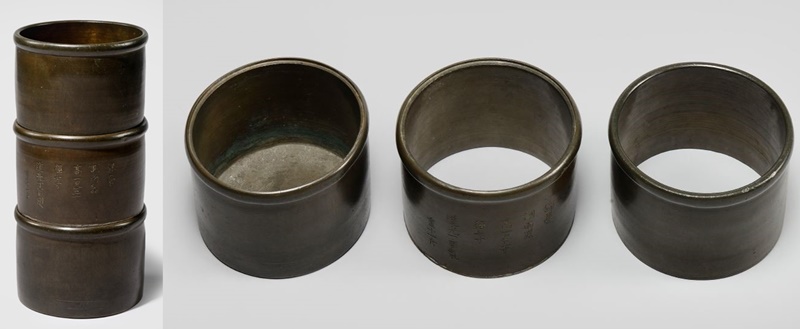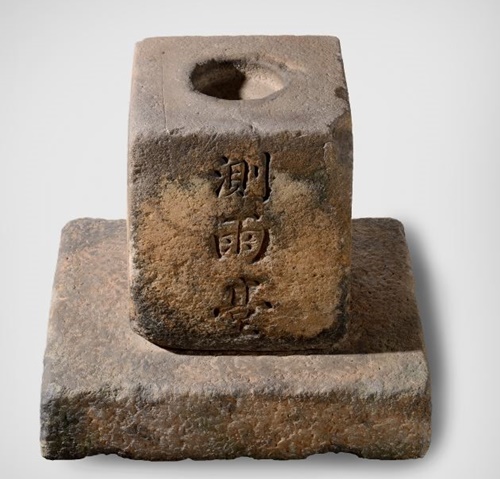
The rain gauge from the Chungcheong-do Provincial Office in Gongju, which was made in 1837, will be designated as a national treasure. The photo above shows the Gongju rain gauge (left) and its parts.
By Oh Hyun Woo and Kim Hwaya
Photos = Cultural Heritage Administration
A rain gauge made in 1837 and kept at the Chungcheong-do Provincial Office in Gongju, Chungcheongnam-do Province, will be designated a national treasure.
Among the many rain-measuring devices believed to have been made during the Joseon Dynasty (1392-1910), this gauge is the only one remaining in complete form. On the surface of the gauge is an inscription showing its production date and size.
The Annals of the Joseon Dynasty has a record of a rain gauge (called cheugugi in Korean) invented in 1442 during the reign of King Sejong the Great to stimulate agricultural activity. The date was 220 years earlier than the automatic rain gauge made by English scientist Christopher Wren, which was the earliest device of its kind in England dated at 1662.
Two rain gauge pedestals -- one from the Gyeongsang-do Provincial Office in Daegu and the other in front of the office Imunwon within Changdeokgung Palace in Seoul -- will be entered on the national treasure list as well. Both pedestals also provide exact production dates and origins on their inscriptions, thus earning high praise as precious relics showing significant and enduring innovation in the nation's history of agricultural science.
The Cultural Heritage Administration (CHA) said, "The rain gauge (in Daegu) was designated a treasure in 1971 and (the other in) 1985, and their value have received recognition as national treasures 50 years later," adding, "The rain gauge (in Daegu) became internationally known through its introduction in a global meteorological journal in 1911 as a unique and groundbreaking creation with no parallel in other countries."
To preserve Korea’s cultural heritage, the CHA designates precious relics and sites with significant historical artistic, academic and technical value as national treasures after deliberation by the Cultural Heritage Committee. The central government has several categories of designation such as "national treasure," "treasure," "historical site" and "natural monument."

This is the rain gauge pedestal from the Gyeongsang-do Provincial Office in Daegu.
hyunw54@korea.kr